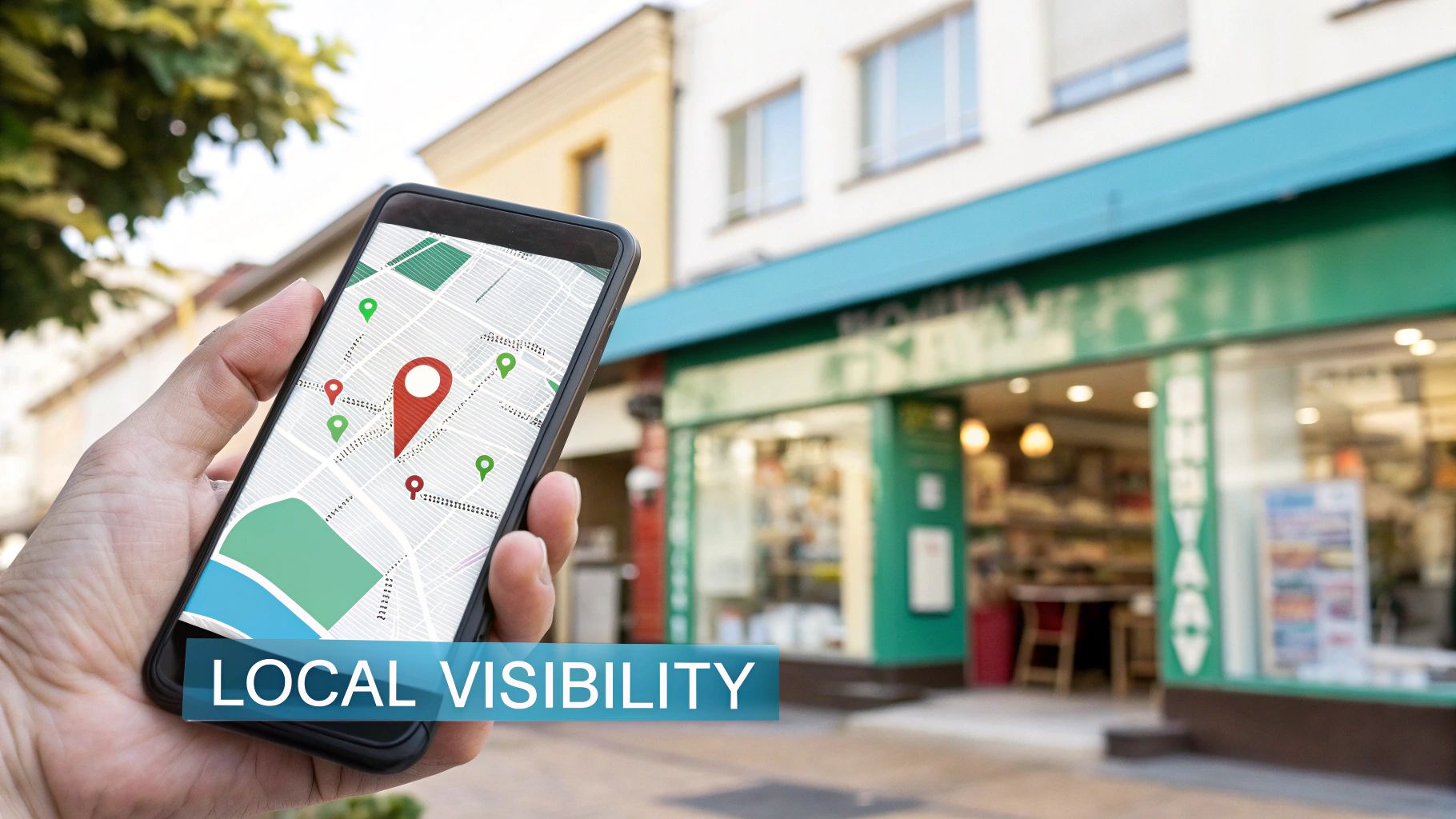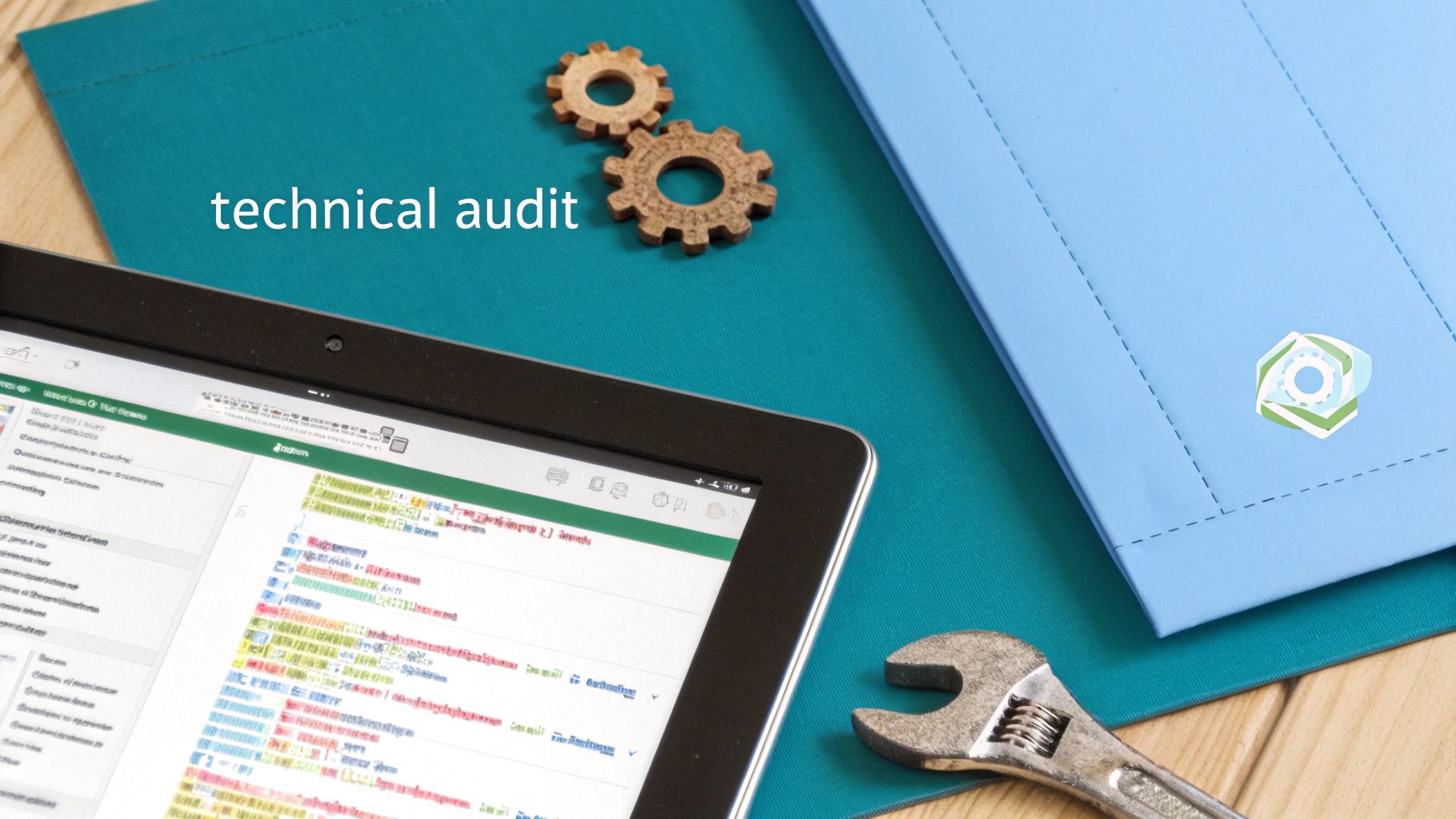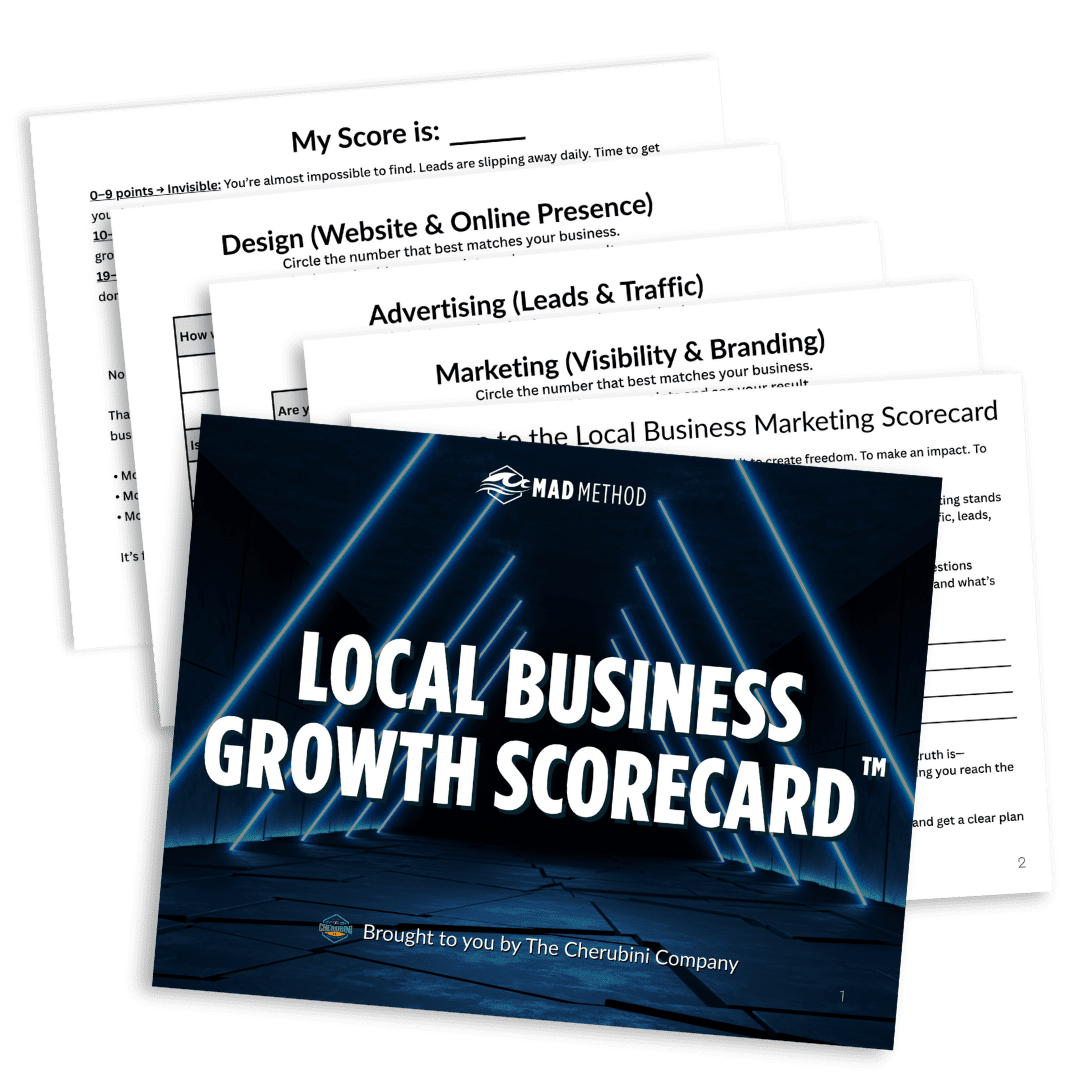Does “SEO” sound like a secret code only tech geeks understand? Let’s change that. Getting your business found on Google doesn’t have to be hard or cost a fortune. It’s like baking a cake. You just need a good recipe and the right ingredients. This small business SEO checklist is your simple recipe to get more customers from places like Newark, Licking County, and Columbus who are already looking for you.
No confusing tech talk here! This is just a simple plan you can start using today. We’ll go over finding your “magic words,” making your website awesome, and turning your Google profile into a customer magnet. If you’re totally new to this, think of this list as the next step up from a basic step-by-step guide to SEO for beginners.
Whether you’re a plumber who needs more calls or a restaurant that wants more hungry visitors, this checklist breaks it all down into easy bites. You don’t need to be a marketing whiz to see real results. Seriously, you can do this! Let’s get started.
1. Find Your ‘Magic Words’ with Keyword Research
Okay, “magic words” might sound like they belong in a fairy tale, but for SEO, they’re the real deal. This first step in any good small business seo checklist is about finding the exact words people type into Google when they need your help. It’s like being a detective for your own business, and it’s fun!
You need to know if people are searching for “pizza near me” or something specific like “best deep dish pizza in Newark.” Knowing this is the secret to having your website show up when they’re hungry and ready to order. This isn’t about code; it’s about listening to what your customers are already saying. You’ve got this!
Why It’s the First Step
Finding your magic words is the foundation for everything else. Without them, you’re just guessing. You could have the prettiest website in the world, but if it doesn’t use the words your customers are searching for, they’ll never find you.
Think of it like this: a small bakery in Granville, Ohio, could try to be found for the word “bread.” But they’d be up against giant national companies. Instead, if they focus on a phrase like “fresh bread delivery Granville Ohio,” they’ll attract local people who are ready to buy. That’s how small businesses win!
How to Find Your Keywords (It’s Easier Than You Think!)
You don’t need fancy, expensive tools to start. You can find these valuable words today with a little bit of thinking and some free helpers online.
Here are a few simple ways to start your search:
- Think Like a Customer: Get a piece of paper and write down what you would search for on Google if you needed your own services. Ask your friends and family to help, too!
- Listen to Your Customers: What questions do your customers ask on the phone? If they ask, “Do you offer emergency plumbing services?” then “emergency plumber” is probably a great magic word.
- Go Local: Always add your city or neighborhood to your phrases. A yoga studio should try for “beginner yoga classes downtown Newark” to get the right people.
- Use Free Tools: Google Keyword Planner is a great free tool. It shows you how many people are searching for your ideas and gives you new ones. You just need a Google account to use it. See? Simple!
2. On-Page SEO Optimization
Now that you have your “magic words,” it’s time to use them! On-page SEO is like decorating your shop. You wouldn’t just throw things on a shelf; you’d set them up so people can easily find what they want. This part of our small business seo checklist is about arranging the words on your website pages to make them super clear for both Google and your visitors.
It’s like putting up big, clear signs in a store. When you fix things like titles and headings, you’re telling Google, “Hey, this page is all about ’emergency plumbing services in Newark,’ and it’s really helpful!” This simple step helps Google understand your website and show it to the right people.

Why It’s a Game-Changer
On-page SEO is where you have all the power. You can’t control everything on the internet, but you can control your own website. You’re telling Google exactly what each page is about, so there’s no confusion. When you do this right, your pages show up higher in search results for your magic words.
Imagine a restaurant fixing its menu page. Instead of a boring title like “Menu,” they could use “Authentic Italian Pizza – Mario’s Pizzeria Chicago.” Now, Google knows exactly what they sell and where they are. This is how you stand out and get local customers who are ready to buy.
How to Tweak Your Pages (No Coding Degree Needed!)
Don’t worry, you don’t need to be a computer programmer to do this. Most website builders like WordPress or Squarespace make it easy. It’s usually just filling in a few boxes. You can do it!
Here are the most important spots to fix up:
- Page Titles (Title Tags): This is the headline that shows up in Google search results. Keep it short (under 60 characters) and put your most important magic word at the beginning.
- Headings (H1 Tags): Each page should have one main headline, called an H1 tag. This should also have your main magic word and say what the page is about.
- Meta Descriptions: This is the little bit of text under your title in search results. It doesn’t help you show up higher, but a good one makes people want to click on your link instead of someone else’s.
- Image Alt Text: Tell Google what your pictures are about. Just describe the picture using your magic words, like “plumber fixing a leaky sink in Newark Ohio.” This helps people find your pictures in image searches.
3. Google My Business Optimization
Think of your Google Business Profile as your storefront on Google. It’s that helpful box that shows your hours, phone number, and reviews when people search for you. Getting this right is one of the most powerful things you can do on this small business seo checklist. It’s often the first thing customers see!
This isn’t some complicated trick. It’s just you claiming your spot on Google and giving customers the info they need to find you or call you. When someone searches for “coffee shop near me,” a complete profile is what makes Google show your business instead of the one down the street. It’s like a free billboard on the world’s biggest search engine.

Why It’s a Top Priority
For local businesses, your Google Business Profile is a must-have. It helps you show up in the “Local Pack”—that little map with three businesses at the top of the search results. That spot is like prime real estate, and filling out your profile is how you get there.
Think about a car repair shop in Newark. If their profile has all their services, hours, and great reviews, they are much more likely to show up when someone searches for “car repair Newark Ohio.” An empty profile is like having a “Closed” sign on your digital front door. This is your chance to shine and build trust before a customer even visits your website.
How to Make Your Profile Shine (The Easy Way!)
Managing your profile is simple, and you can see results fast. Just a few minutes a week can make a big difference. You can do this!
Here are some simple ways to make your profile awesome:
- Fill Out Everything: Don’t leave any part empty. Add your services, hours, address, and phone number. The more info Google has, the more it will trust you.
- Pick the Right Category: Be specific! Instead of just “Restaurant,” choose “Italian Restaurant” or “Pizzeria.” This helps Google send the right customers to you.
- Become a Photographer: Add new, high-quality photos often. Show off your shop, your products, your team, and your happy customers. A coffee shop could post pictures of its cool latte art every day!
- Manage Your Reviews: Reply to all reviews, both good and bad, as fast as you can. This shows Google and your customers that you care.
- Use Google Posts: Share updates, special deals, or news using the “Posts” feature. It’s like free advertising right on your profile.
4. Conduct a Technical SEO ‘Health Check’
Think of your website like a car. It can look great on the outside, but if the engine is broken, it won’t go anywhere. A technical SEO check is like looking under the hood to make sure everything is working right. It ensures there are no hidden problems stopping Google from finding and liking your site.
This part of your small business seo checklist isn’t about the words you see. It’s about the “behind the scenes” stuff. It checks if your website is fast, safe, and easy for Google’s little robots to look at. A healthy website gets a gold star from Google, which helps you show up higher in search results.

Why It’s a Non-Negotiable Step
You could have the best information in the world on your website, but if it takes forever to load, people will leave before they read it. Technical problems can quietly ruin your chances of being found on Google. They make for a bad experience for visitors, and Google does not like that.
For example, a local restaurant in Columbus that wants more online orders needs a safe website (look for the little padlock icon in the address bar). Without it, customers might not feel comfortable putting in their credit card info. Fixing these little technical things builds trust with both customers and Google.
How to Check Your Website’s Health (It’s Easier Than You Think!)
You don’t need to be a computer whiz to find big problems. There are free and easy tools that do the hard work for you and give you a simple report card on your website.
Here are a few simple ways to check your website’s health:
- Check Your Speed: Use a free tool like Google PageSpeed Insights. Just put in your website’s address, and it will give you a score and tell you what to fix. Easy!
- Test for Mobile-Friendliness: Most people use their phones to browse the web. Use Google’s Mobile-Friendly Test to make sure your site looks good on a small screen.
- Look for Broken Links: A “404 Page Not Found” error is a dead end for visitors and Google. Use a free broken link checker online to find and fix them.
- Secure Your Site: Look at your website’s address. Does it start with
https://? If it only sayshttp://, it’s not safe. This is an easy but super important fix!
5. Become the Go-To Expert with a Content Strategy
Imagine your website is a library. You want people to visit, find the answers they need, and see you as the expert. That’s what a good content plan does. This part of the small business seo checklist is all about creating helpful articles and guides that answer your customers’ biggest questions.
You’re not just selling things; you’re helping people. A heating and cooling company that writes a blog post on “how to fix a noisy furnace” becomes a trusted friend before the customer even needs to buy a new one. This builds trust and tells Google you know your stuff, making your website the place to go when people are ready to buy.
Why It’s a Game-Changer
Having a plan for your content turns your website from a simple online brochure into a customer-getting machine. Instead of just waiting for people to find you, you bring them in by offering helpful information. This is how you can beat bigger competitors without spending a lot of money.
For example, a small clothing store in Newark could create a style guide called “What to Wear to Granville’s Summer Polo Match.” This doesn’t just sell clothes; it solves a local problem and attracts people who are ready to shop. To really be seen as the expert, creating a simple content strategy for small business is a must.
How to Start Creating Content (No English Degree Needed!)
You’re already the expert in what you do, so you have all the knowledge you need. Now it’s just about sharing it! It’s way easier than you think to get started.
Here are a few easy ways to begin:
- Answer Every Question: Think of the top 10 questions your customers always ask. Turn each answer into a blog post or a page on your website. If they’re asking you, other people are Googling it!
- Create “Pillar” Pages: Pick a big topic, like “retirement planning” for a financial advisor, and write a super helpful guide about it. This can become a go-to resource that lots of people will visit.
- Show, Don’t Just Tell: Add pictures or a quick video to your articles. If you’re a plumber showing how to fix a leaky faucet, a 30-second video is awesome.
- Link Your Pages Together: When you write a new post, add links to your other related pages or posts. This helps visitors and Google explore more of your site. Helpful content is a huge part of how you can educate your customers and build trust with lead generation website design.
6. Build Your Digital Reputation with Local Citations
Think of local citations as putting up little signs for your business all over the internet. This step in your small business seo checklist is about getting your business name, address, and phone number (or NAP) listed on different websites and online directories. It’s like being in the phone book, but for today’s digital world.
When Google sees your business info listed the same way on trusted sites like Yelp and Facebook, it thinks, “Hey, this business is real and it’s right where they say it is!” This builds trust with Google, which helps you show up higher in local search results. It’s a simple way to show Google you’re a real, active business in your town.
Why It’s a Local SEO Powerhouse
Your Google Business Profile is the star, but these citations are the amazing backup singers. They prove that your business is legitimate and where you say it is. If your info is wrong or different on various sites, it can confuse Google and hurt your chances of being found. Getting this right is super important.
Imagine a vet clinic in Newark. Being on Google is great, but also being listed on pet websites and Yelp makes it even more trustworthy. Each listing that matches is like another vote of confidence for Google, helping that clinic show up when a worried pet owner searches for an “emergency vet near me.”
How to Build Your Citations (The Right Way)
The most important rule is to be consistent. Every single listing must have the exact same name, address, and phone number. No shortcuts! You can start this today without spending any money.
Here’s a simple plan to get you started:
- Master Your NAP: Write down your official business Name, Address, and Phone number. Use this exact information everywhere. If your address is “123 Main Street,” don’t use “123 Main St.” on another website.
- Start with the Big Players: Get your business listed on the most important websites first. This includes Google Business Profile, Facebook, Apple Maps, and Yelp.
- Find Your Niche: Look for websites that are just for your industry. A tax helper should be on finance websites, while a restaurant should be on TripAdvisor.
- Keep it Consistent: As you add your business to more sites, double-check that all your info—from your website to your hours—is exactly the same everywhere.
7. Link Building and Authority Development
Imagine the internet is a giant high school. A link from another website to yours is like a popular kid saying you’re cool. The more good websites that link to you, the more Google sees you as a trustworthy expert. This is a very important part of any small business seo checklist.
This is called “link building,” and it’s about earning these shout-outs. It’s not about being tricky; it’s about building real relationships and having a website that’s so helpful that other people want to talk about it. It tells Google that you’re a big deal in your field.
Why It Builds Trust with Google
Every good link you get is like a vote for your business. When a local news website or a respected blog links to your site, Google pays attention. It tells Google that your website has valuable information and that you’re a real business people can trust.
Imagine a painter in Columbus gets a link from a big paint company like Sherwin-Williams. That one link tells Google that a huge, trusted brand thinks their work is good. This is how you climb higher in search results and show you’re a serious business.
How to Earn Your First Links (No Begging Required!)
You don’t have to be a marketing expert to start getting links. It’s about being a good neighbor, both online and in your town. It’s simpler than it sounds, and you can start today.
Here are a few simple ways to earn valuable links:
- Get Involved Locally: Sponsor a local kids’ sports team or a community event. These groups usually have a website and will be happy to add a link to their sponsors’ sites.
- Partner Up: Do you work with other local businesses? A plumber could get links from the construction companies they work with, and they could link back. It helps everyone!
- Create Share-Worthy Content: Write a blog post that answers a huge question for your customers, like “The Ultimate Guide to Choosing a House Painter in Newark.” Super helpful guides like this get shared and linked to by others.
- Join Local Directories: Get your business listed with your local Chamber of Commerce or other business groups. These are often great links that make you look more credible.
7-Point Small Business SEO Checklist Comparison
| SEO Aspect | Implementation Complexity 🔄 | Resource Requirements ⚡ | Expected Outcomes 📊 | Ideal Use Cases 💡 | Key Advantages ⭐ |
|---|---|---|---|---|---|
| Keyword Research and Strategy | Moderate – time-intensive research 🔄 | Low to moderate – mostly tools ⚡ | Data-driven insights, market gaps 📊 | Small businesses needing targeted keyword focus | Cost-effective, prioritizes content, reveals opportunities ⭐ |
| On-Page SEO Optimization | Moderate – requires technical skill 🔄 | Moderate – content & coding ⚡ | Improved rankings, better UX 📊 | Webpages needing relevance & SEO structure | Direct control, cost-effective, user experience boost ⭐ |
| Google My Business Optimization | Low to moderate – ongoing maintenance 🔄 | Low – requires consistent updates ⚡ | High local visibility, customer engagement 📊 | Local businesses targeting local search & maps | Free platform, boosts local presence, customer interaction ⭐ |
| Technical SEO Audit | High – technical expertise required 🔄 | Moderate to high – dev support ⚡ | Better site crawlability, faster load 📊 | Websites with performance issues and indexing problems | Improves crawl efficiency, UX, and prevents ranking issues ⭐ |
| Content Strategy and Creation | High – continuous content development 🔄 | High – significant time investment ⚡ | Authority building, organic traffic growth 📊 | Brands wanting long-term inbound traffic & engagement | Establishes expertise, supports long-tail keywords, multi-format ⭐ |
| Local Citation Building | Moderate – manual submissions 🔄 | Moderate – ongoing monitoring ⚡ | Improved local rankings and visibility 📊 | Businesses focusing on local SEO across directories | Boosts local authority, multi-platform presence ⭐ |
| Link Building and Authority | High – outreach and relationship based 🔄 | High – time-intensive outreach ⚡ | Higher domain authority and referral traffic 📊 | Businesses aiming to increase site authority and external signals | Significantly improves rankings, builds partnerships ⭐ |
You Did It! Now, Let’s Get Growing.
Give yourself a big pat on the back. You just went through a complete small business SEO checklist that can help you get more visitors, more phone calls, and more customers. It might feel like a lot, but SEO isn’t about doing everything at once. It’s about taking small, steady steps forward, one at a time.
Think of it like building a house. You start with a strong foundation (your website health and magic words), then you build the walls (your on-page fixes and great content). Finally, you landscape the yard and put out a welcome mat (your local listings and Google profile). Each step is easy on its own, and before you know it, you’ve built something amazing. You can do this!
Your Path to SEO Success Starts Now
So, what’s the most important thing to remember? Just start. Don’t feel like you have to do everything today. Pick one thing from this list and do it this week. Maybe that’s fixing up your Google Business Profile or finding five new ideas for your blog.
Here are the main ideas we talked about that will help you the most:
- Know Your Magic Words: Don’t guess what your customers are searching for. Use simple tools to find the exact words they use.
- Fix Your Website: Making your website easy for Google and people to read is a big win. Simple changes to your titles and headings can make a huge difference.
- Own Your Local Map: Your Google Business Profile is your digital storefront. Keep it fresh with new posts, photos, and reviews to attract local customers.
- Build Your Reputation: Getting your business name, address, and phone number listed correctly online builds trust with Google and helps you show up more often.
The real power of this small business SEO checklist is in doing it consistently. Every little update and every new review is another sign to Google that your business is active, helpful, and the best choice for customers. You are totally capable of doing this. Every step you take gets you closer to being the go-to business in Newark, Columbus, or wherever you are. The best time to start is right now!
Feeling a little stuck or just want a friendly expert to help you out? That’s what we’re here for. Since 1998, The Cherubini Company has been helping small businesses just like yours grow online. We can make this simple SEO checklist a reality for your business, together. Contact us today for a jargon-free chat about your goals.




